Ancient Cult Of Human Skulls And Communication With The Other World
A. Sutherland - AncientPages.com - Do you believe in skulls, which wish to be left in places they really enjoy?
There are mysteriously chosen skulls that create supernatural atmosphere. A tradition of a widespread belief in the head as the seat of the soul and that this represented a medium for communication with the Other World, is very old.
Power of the skulls has very strong and deep roots in the life of the ancient people on all continents. The cult of human heads, collecting of enemy heads, to obtain their powers is example of continuing cycle of the spirit/life.
The Sanctuary of Roquepertuse and the Celtic Cult of the Head - skulls placed in niches of a French Celtic sacred site. Image source
Head-hunters preserved the skulls of dead enemies as trophies of war and it was considered a great honor.
Many believe that the Celts in particular were worshippers of the head. There have been many archaeological finds of Celtic cult skulls in several places in England. In fact, in the early Celtic period, the head was believed to be the vassal of the soul.
There is, however, "much debate amongst Celtic historians as to the validity of the so called Celtic “Cult of the Head”, according to Celtic Heritage.
“The frequency with which human heads appear upon Celtic metalwork proved nothing more than that they were a favourite decorative motif, among several, and one just as popular among non-Celtic peoples”, that the use of the head as icons is merely due to the practice been a favoured artistic image," according to Professor Ronald Hutton, an English historian who specializes in the study of Early Modern Britain.
Skulls have always had an important role in black magic and witchcraft.
In a gloomy English trial in 1612, head of a Lancashire family of witches, Anne Chattox, was alleged to have desecrated graves in a churchyard to collect skulls and teeth for the purpose of using them in some forbidden rituals. Anne Chattox was hanged.
The evidence for the cult of the head funished by the iconography, and testified to be the comments of the classical writes, is fully supported by the literature of the British Isles. Image source: Dictionary of Celtic Myth and Legend by Miranda Green
Many primitive people around the world regarded the human skull with superstition and mixed feelings of respect, wonder and fear. They believed that the skull was soul protectors, because the skull housed the soul.
In the 17th century, a young girl, Anne Griffiths lived at Burton Agnes Hall in Yorkshire. She was attacked and beaten by some robbers. Before she died, she expressed a strange wish that her head should be buried in the home she had loved. Nobody listened to the dying's wish. Anne Griffiths was buried in the village churchyard.
The problems began after the funeral, when intimidating noises appeared in the house. The sound of mysterious crashes and slamming doors were heard. The dead girl's skull was exhumed and bricked up in a wall off the house’s staircase. Anne Griffiths's wish came true, since then, her lovely home and its residents had been at peace.
It seems that of all unhappy, screaming skulls ever recorded is that of Bettiscombe Manor, in Dorset, ancestral home of the Pinney family. During the 18th century, one of the Pinney family members returned home from the West Indies. He was accompanied by a black slave, who died shortly after coming to England.
Before he died, he was promised to be buried in his homeland, the Caribbean Island of Nevis. The promise given to him was unfortunately broken and the black man was buried in the local churchyard.
Horrifying screams began to be heard coming from the the black man's grave. The house was long tortured by poltergeist activity and finally the skeleton was recovered and brought into the house.
Most of the stories of screaming skulls originate from England and other European locations and the most evidence of the Celtic head cult comes from the Gallic temple sites of Entremont and Roquepertuse, France, according to Miranda Green's Dictionary of Celtic Myth and Legend.
The "screaming skull" mystery is probably more legend than a real, documented fact, but there is just enough credibility in each story to be believable. The story of the "screaming skull" has been known for a very long time and passed on from one generation to another.
It still deserves to be respected.
Written by – A. Sutherland - AncientPages.com Senior Staff Writer
Copyright © AncientPages.com All rights reserved. This material may not be published, broadcast, rewritten or redistributed in whole or part without the express written permission of AncientPages.com
More From Ancient Pages
-
 On This Day In History: Alexander The Great Defeats Darius III Of Persia In The Battle Of The Granicus On May 22, 334 B.C.
News | May 22, 2016
On This Day In History: Alexander The Great Defeats Darius III Of Persia In The Battle Of The Granicus On May 22, 334 B.C.
News | May 22, 2016 -
 Enigma Of Nehushtan – The Biblical Copper Snake
Biblical Mysteries | Oct 31, 2018
Enigma Of Nehushtan – The Biblical Copper Snake
Biblical Mysteries | Oct 31, 2018 -
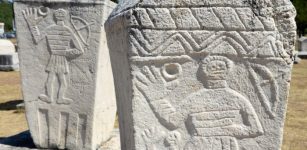 Enigmatic ‘Stone Sleepers’ – Megalithic Tombstones ‘Stecci’ In The Western Balkans
Civilizations | Dec 3, 2018
Enigmatic ‘Stone Sleepers’ – Megalithic Tombstones ‘Stecci’ In The Western Balkans
Civilizations | Dec 3, 2018 -
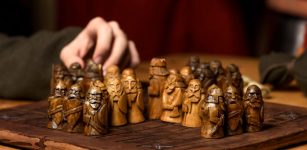 Hnefatafl: Ancient Viking Board Game “King’s Table” Popular In Medieval Scandinavia
Ancient History Facts | Mar 20, 2016
Hnefatafl: Ancient Viking Board Game “King’s Table” Popular In Medieval Scandinavia
Ancient History Facts | Mar 20, 2016 -
 Shipboard Cannon Found On The Swedish West Coast May Be Europe’s Oldest!
Archaeology | Sep 12, 2023
Shipboard Cannon Found On The Swedish West Coast May Be Europe’s Oldest!
Archaeology | Sep 12, 2023 -
 Dragon Man: New Species Of Human May Replace Neanderthals As Our Closest Relative
Archaeology | Jun 26, 2021
Dragon Man: New Species Of Human May Replace Neanderthals As Our Closest Relative
Archaeology | Jun 26, 2021 -
 Etowah Indian Mounds: A Legacy Of The Ancient Mississippian Culture
Featured Stories | Oct 9, 2018
Etowah Indian Mounds: A Legacy Of The Ancient Mississippian Culture
Featured Stories | Oct 9, 2018 -
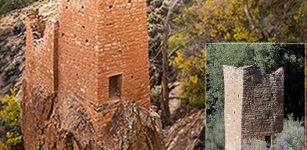 Ancient Ruins Of Hovenweep: Impressive Puebloan Masonry
Civilizations | Mar 15, 2016
Ancient Ruins Of Hovenweep: Impressive Puebloan Masonry
Civilizations | Mar 15, 2016 -
 Incredible 5,000-Year-Old New-York-Like Metropolis Discovered In Israel
Archaeology | Oct 9, 2019
Incredible 5,000-Year-Old New-York-Like Metropolis Discovered In Israel
Archaeology | Oct 9, 2019 -
 On This Day In History: Aztec Calendar Stone Rediscovered – On Dec 17, 1790
News | Dec 17, 2016
On This Day In History: Aztec Calendar Stone Rediscovered – On Dec 17, 1790
News | Dec 17, 2016 -
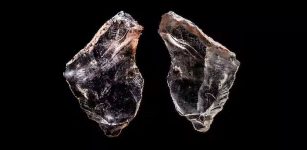 65,000-Year-Old ‘Stone Swiss Army Knives’ Show Early Humans Had Long-Distance Social Networks
Archaeology | Oct 22, 2022
65,000-Year-Old ‘Stone Swiss Army Knives’ Show Early Humans Had Long-Distance Social Networks
Archaeology | Oct 22, 2022 -
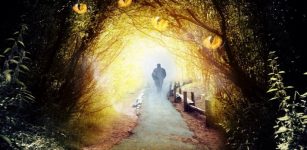 Årsgång – Year Walk In The Forest – Mystical Journey To Gain Knowledge About The Future – An Ancient Swedish Ritual
Ancient Traditions And Customs | Jan 2, 2019
Årsgång – Year Walk In The Forest – Mystical Journey To Gain Knowledge About The Future – An Ancient Swedish Ritual
Ancient Traditions And Customs | Jan 2, 2019 -
 Thirsty Wheat Needed New Water Management Strategy In Ancient China
Archaeology | Nov 10, 2022
Thirsty Wheat Needed New Water Management Strategy In Ancient China
Archaeology | Nov 10, 2022 -
 Amaru (Katari) – Powerful Inca God Who Controlled Weather Phenomena
Featured Stories | Apr 9, 2024
Amaru (Katari) – Powerful Inca God Who Controlled Weather Phenomena
Featured Stories | Apr 9, 2024 -
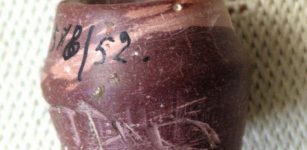 Unique Medieval Spindle Whorl With Cyrillic Inscription Discovered In Poland
Archaeology | Mar 9, 2018
Unique Medieval Spindle Whorl With Cyrillic Inscription Discovered In Poland
Archaeology | Mar 9, 2018 -
 Daedalus And Icarus Who Forever Remained An Example For Many Dreamers
Featured Stories | Sep 11, 2023
Daedalus And Icarus Who Forever Remained An Example For Many Dreamers
Featured Stories | Sep 11, 2023 -
 Fascinating Gigantic Creatures Today Totally Extinct 13,000 Years Ago Co-Existed With Early Americans
Archaeology | May 8, 2012
Fascinating Gigantic Creatures Today Totally Extinct 13,000 Years Ago Co-Existed With Early Americans
Archaeology | May 8, 2012 -
 Magnificent New Trove Of Ancient Egyptian Artifacts And 250 Mummies At The Saqqara Necropolis
Archaeology | May 30, 2022
Magnificent New Trove Of Ancient Egyptian Artifacts And 250 Mummies At The Saqqara Necropolis
Archaeology | May 30, 2022 -
 The Mysterious Books Of Prophecies Of The Knights Templar – Where Are They Hidden?
Featured Stories | Mar 26, 2022
The Mysterious Books Of Prophecies Of The Knights Templar – Where Are They Hidden?
Featured Stories | Mar 26, 2022 -
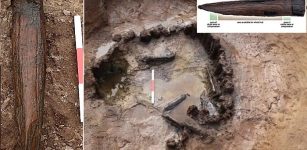 ‘Exceptionally’ Rare Iron Age Axle Found In Suffolk
Archaeology | Jan 26, 2023
‘Exceptionally’ Rare Iron Age Axle Found In Suffolk
Archaeology | Jan 26, 2023


